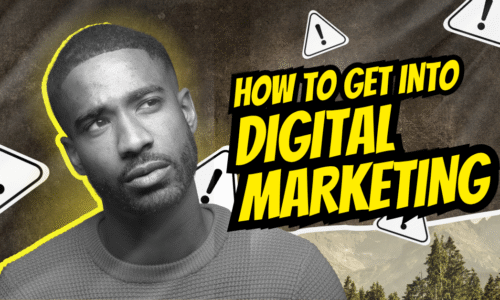Content Marketing vs Digital Marketing: What’s the Difference?

Many people confuse content marketing with digital marketing, but they aren’t the same thing. While they often work together, they serve different goals and strategies. In this blog, we’ll explain content marketing vs digital marketing, compare their key differences, and help you understand how both can grow your business.
What Is Digital Marketing?
Digital marketing is any online effort to promote or advertise a product or service. It includes various methods like paid ads, SEO, social media, email campaigns, and more. Its main goal is to reach potential customers online and drive traffic, leads, or sales.
Common examples:
- Paid Ads like Google or Facebook Ads
- Email marketing
- SEO (Search Engine Optimization)
- Social media marketing
- Influencer campaigns
According to the Digital Marketing Institute, digital marketing includes all marketing efforts that use the internet or electronic devices.
What Is Content Marketing?
Content marketing is a type of digital marketing focused on creating and sharing valuable content to attract and engage your audience. Rather than directly selling, it provides information, solves problems, or entertains.
Examples include:
- Blog posts
- Ebooks and guides
- Infographics
- YouTube videos
- Social media stories
- Podcasts
Citation: Content Marketing Institute defines content marketing as “a strategic approach focused on creating and distributing valuable, relevant, and consistent content to attract and retain a clearly defined audience.”
Is Content Marketing Part of Digital Marketing?
Yes, content marketing is a branch of digital marketing. While digital marketing covers many channels and techniques (paid and organic), content marketing focuses only on content creation and distribution for long-term brand value.
Think of it this way:
Digital marketing = Umbrella
Content marketing = One strong part under that umbrella
Key Differences Between Content Marketing and Digital Marketing
Here, we create a clear, comparison-based breakdown.
| Feature | Digital Marketing | Content Marketing |
| Objective | Quick results (sales, traffic) | Long-term trust, awareness, SEO |
| Approach | Promotional (ads, campaigns) | Educational or value-based content |
| Timeline | Short-term or campaign-based | Long-term strategy |
| Cost | Can be high (ads, tools) | Can start low, grows with time |
| Tools/Platforms | Google Ads, Meta Ads, Email platforms | Blogs, YouTube, Canva, CMS |
| ROI Measurement | Immediate (clicks, sales) | Delayed (engagement, leads, SEO growth) |
Examples of Content vs Digital Marketing
Real-life scenarios make this easier to grasp.
Example 1: Local Cafe Promotion
- Digital Marketing: Runs Google Ads to promote a limited-time offer.
- Content Marketing: Writes a blog on “Best Coffee Pairings” and shares on Instagram with behind-the-scenes brewing videos.
Example 2: Online Course Creator
- Digital Marketing: Sends cold emails or runs Facebook ads.
- Content Marketing: Launches a free ebook or YouTube series explaining key concepts.
Pros and Cons of Each Approach
Let’s look at what each method does best—and where it may fall short.
Pros of Digital Marketing:
- Quick visibility
- Highly targeted (ads, demographics)
- Easy to track ROI
- Immediate traffic
Cons of Digital Marketing:
- Can be expensive
- Stops when you stop spending
- Ad fatigue and low trust
Pros of Content Marketing:
- Builds long-term trust and SEO
- Lower cost over time
- Repurposable content (blogs → videos → posts)
- Strengthens brand voice
Cons of Content Marketing:
- Takes time to show results
- Needs consistency and strategy
- Harder to measure ROI quickly
When to Use Content Marketing vs Digital Marketing
Here’s a strategic breakdown for readers to decide what to use and when.
Use digital marketing when:
- You want fast results
- Launching a product or event
- Running short-term campaigns
Use content marketing when:
- You want to educate your audience
- You aim to grow SEO and brand trust
- Building an email list or community
Best results often come from combining both in a single plan.
How to Combine Both for Best Results
This section gives actionable advice to create a balanced marketing plan.
- Step 1: Use content to bring in organic traffic (blog, video, social)
- Step 2: Use digital ads to boost high-performing content
- Step 3: Build email list using a content-led lead magnet
- Step 4: Retarget with ads based on content interaction
Final Thoughts: Content Marketing vs Digital Marketing
Content marketing vs digital marketing doesn’t have to be a battle. Both serve different purposes, and when used together, they can take your brand to the next level. Content builds trust, and digital marketing gets eyes on it faster. Know your goals, pick your tools wisely, and mix both to maximize results.


![Top 10 Digital Marketing Case Studies [2025 Edition]](https://skyhighreach.com/wp-content/uploads/2025/08/9-500x300.png)

